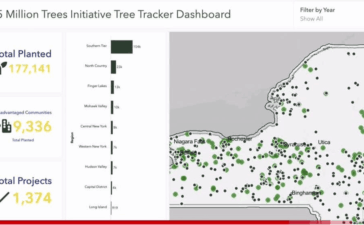By Merlin Piscitelli, Datasite Chief Revenue Officer, EMEA
The Artificial Intelligence (AI) revolution, sparked by generative AI tools like ChatGPT, has led to an unprecedented investment surge. The global AI market, valued at $200 billion in 2023, is projected to expand at over 20% annually, reaching nearly $2 trillion by 2030.
Companies across various sectors, including tech giants, have allocated substantial resources to develop and implement AI technologies. These investments aim to streamline processes, analyse vast data sets, increase efficiencies, boost competitiveness and improve customer experiences.
As the initial excitement subsides, questions arise about when these massive AI investments will yield the desired returns. Investors and analysts are increasingly scrutinising AI’s impact on companies’ financial performance, prompting some businesses to revise their financial reporting to better reflect AI’s influence on earnings and revenues.
Early Indications of Returns
With an estimated $60 billion annually poured into AI model development, the scale of AI investment has been remarkable. Big tech alone is expected to invest $210 billion in AI-related capital expenditures in 2024. These investments are driven by a strong belief in AI’s potential to transform lives and work, with some projections indicating that AI will create 97 million jobs and generate $15.7 trillion for the economy by 2030.
While many AI investments are yet to pay off, some early adopters have seen tangible benefits. Some companies have reported revenue increases from AI-powered analysis, while others have achieved returns through AI consulting. The use cases for AI in relation to revenue are continuing to increase day-by-day and are a promising sign of what is to come.
Timeline for Strong Revenue Generation
Still, significant revenue generation may take several years to materialise. By 2025, there may be more widespread revenue generated from AI investments, particularly in sectors such as healthcare, finance, and manufacturing.
Yet, with most companies still experimenting with AI adoption, the timeline for substantial revenue growth from AI and its full economic potential is likely to unfold over a longer period, potentially spanning the next decade and beyond. This is mainly due to some of the key challenges AI adoption brings.
Navigating Challenges and Concerns
The cost associated with developing, implementing, and securely monitoring AI technologies are substantial, and has potential to increase as the technology becomes more complex. Many
organizations are still testing and learning how to best utilise AI in their business, keep their workforce secure, and identify what customers are willing to pay for.
The M&A industry is no different. Sixty percent of global dealmakers admitted that while they’re familiar with AI technology, adoption at their organisation remains low or experimental. Many dealmakers said data security and privacy, especially with generative AI, were among their top concerns about the technology. Concerns also arose about the accuracy and reliability of AI, as well as bias learnt from the training source and models.
Datasite research also shows that while 42% of M&A professionals believe productivity is the greatest benefit of using generative AI in their business, many also want some form of regulation to address concerns. The EU AI Act, enacted earlier this year, sets a best practice framework for regulators in other markets.
The Future of AI Investments
Still, while there are challenges, the potential benefits of AI are evident. In M&A, AI can revolutionise due diligence processes, significantly reducing time and human error, while improving regulatory compliance. Across industries, around 75% of the value that generative AI use cases could deliver falls across four key areas of business: customer operations, marketing and sales, software engineering and research and development, all of which have an impact on driving revenue.
Therefore, increased AI M&A activity is anticipated, potentially leading to consolidation in the AI subsector as startups are acquired for their capabilities and talent. The generative AI boom, coupled with improving financial conditions, is driving a hot TMT market, with global TMT sell-side deal kickoffs on Datasite up 12% globally and 14% in EMEA in the first half of the year. Since these are deals at their inception rather than announced, it gives a good indication of announced activity to come.
Companies that effectively integrate AI into core business processes, address security and ethical concerns, and deliver tangible value to customers will likely see the greatest returns on their AI investments. Moving forward, expect businesses to focus on deploying clear use cases, hiring appropriate talent to manage and implement AI systems, and ensuring robust security measures and regulations are followed. Those that succeed in these areas will drive future returns when it comes to AI.
















